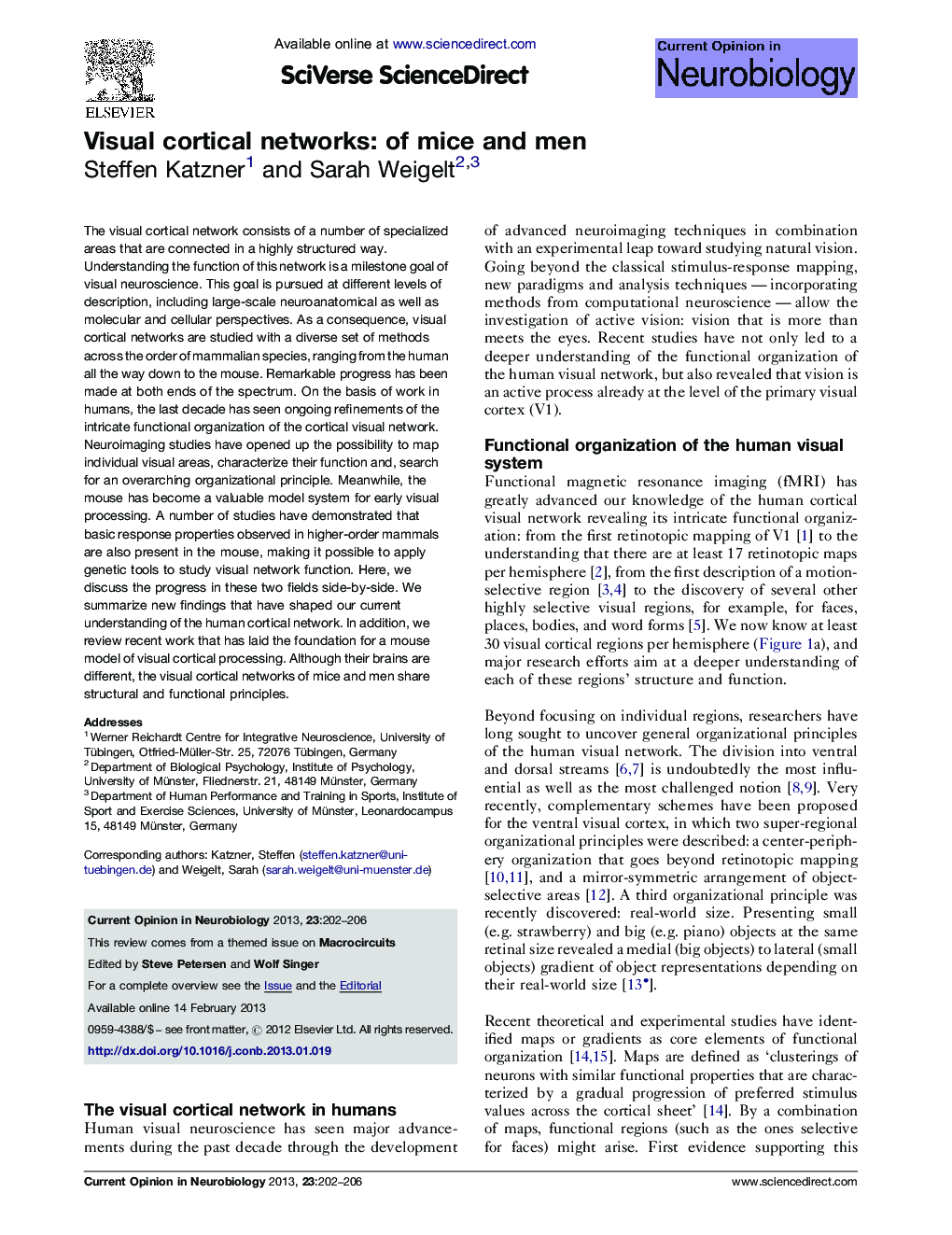| Article ID | Journal | Published Year | Pages | File Type |
|---|---|---|---|---|
| 6266837 | Current Opinion in Neurobiology | 2013 | 5 Pages |
The visual cortical network consists of a number of specialized areas that are connected in a highly structured way. Understanding the function of this network is a milestone goal of visual neuroscience. This goal is pursued at different levels of description, including large-scale neuroanatomical as well as molecular and cellular perspectives. As a consequence, visual cortical networks are studied with a diverse set of methods across the order of mammalian species, ranging from the human all the way down to the mouse.Remarkable progress has been made at both ends of the spectrum. On the basis of work in humans, the last decade has seen ongoing refinements of the intricate functional organization of the cortical visual network. Neuroimaging studies have opened up the possibility to map individual visual areas, characterize their function and, search for an overarching organizational principle. Meanwhile, the mouse has become a valuable model system for early visual processing. A number of studies have demonstrated that basic response properties observed in higher-order mammals are also present in the mouse, making it possible to apply genetic tools to study visual network function.Here, we discuss the progress in these two fields side-by-side. We summarize new findings that have shaped our current understanding of the human cortical network. In addition, we review recent work that has laid the foundation for a mouse model of visual cortical processing. Although their brains are different, the visual cortical networks of mice and men share structural and functional principles.
⺠This article reviews work on cortical visual processing in humans and mice. ⺠Human and mouse cortical visual networks share fundamental principles. ⺠Signatures of active vision can be seen in human and mouse V1.
